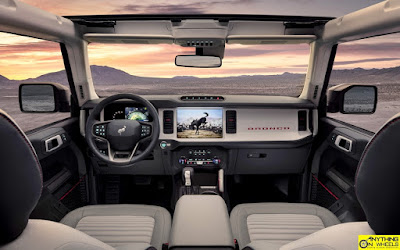Nissan has been in the news for all the wrong reasons of late. This is not one of them. The Japanese car-maker took the wraps off it’s all-new, full-electric Ariya crossover and - along with it - a new brand identity. At first glance, there’s hardly anything to dislike. Has Nissan then hit the nail on its head? Let’s delve a bit and find out what’s good and what’s not so good about the Ariya.
Good: Ariya oozes appeal inside and out
When Nissan brought in the Ariya Concept at the 2019 Tokyo Motor Show, it came across the Ariya was shown in concept form at the 2019 Tokyo Motor Show, it came across as a sleek-looking crossover that looked contemporary without trying too hard. It's a good thing then the production model is literally unchanged from the concept.
Up front, a dramatic-looking glossy black panel - called the 'Shield' - takes center stage, housing Nissan's illuminated new logo and a textured panel underneath. Thin headlights underlined by LED running lights that extend downwards into the grille can't be missed either. The curvy profile is characterized by a prominent shoulder line that runs end-to-end and wraps around the rear where a full-width panel houses dark-tinted taillights. The sloping coupe-like roof-line, rather large integrated spoiler and those sharply-raked C-pillars lend the Ariya a strong sense of dynamism.
If you thought that was impressive, the interiors elevate things further by a few notches. As is the norm these days, minimalism is the theme here with Nissan's designers doing away with most of the buttons and switches. Two 12.3-inch touchscreens for instruments and navigation are placed on top with a full-width trim housing air-conditioning vents below. The party trick here are the climate control functions that are housed in the wooden panel in the form of capacitive haptic switches. The stand-alone floor console between the front seats and the seamless integration of the dashboard with the door panels are the other highlights.
Good: Nissan's EV head-start is a plus
When stand-alone Electric Vehicles from most rivals are still in their first generations, Nissan's Leaf is already in the second half of it's second generation. Launched way back in 2010, the Japanese brand's head-start in EVs gave its engineers a decade worth of experience to dig into. Its only fair to assume all that has been put to good use while working on the Ariya.
Two battery packs are available - a 63-kWh unit and a 87 kWh unit. Both of them can be had as two-wheel-drive or four-wheel-drive models. The former will have a solitary motor powering the front wheels and producing 215 horsepower and 300 Nm of torque. The latter will have two motors using Nissan's e-4ORCE system to channel 389 horsepower and a massive 600 Nm of torque to all four wheels. With all that torque available from the get go and twin motors providing the required balance, the four-wheel-drive Ariya should be quick and quite a hoot to drive.
The battery pack is placed quite low between the wheels for better Center of Gravity and is liquid-cooled unlike in the Leaf. Range for individual models hasn't been declared yet.
Not so good: Nissan has just hit the 'Reset' button
Thanks to a combination of internal politics, questionable decisions on certain models in the portfolio, lethargy in some markets and unwarranted expansion in others, the last few years have not been kind to Nissan. The folks at the helm took cognizance and hit the reset button with the so-called NEXT strategy that focuses on rationalization and prioritizing core markets and models. Announced along with it was a plan to launch 12 new models in 18 months. How's this not good, you wonder? That's because Nissan shouldn't have gotten to this stage in the first place and an EV like Ariya needs all the backing it could possibly get to make a difference against rivals of Tesla's calibre.
That said, it appears the recovery is on a fast track. In the last three months, an all-new Rogue (X-Trail in some markets) broke cover in the USA, Kicks got a refresh with an electrified powertrain in Japan and Thailand and here in India, Nissan unveiled the Magnite Concept that previews a compact SUV slated for launch in 2021. That brings us to the Ariya and the new brand identity that debuted alongside it. Did you notice the sleek and simplified Nissan logo etched proudly on the hood? Bodes well for the future of the brand, you think?
Good: Ariya is a tech tour-de-force
EV credentials aside, the Ariya comes loaded with a whole load of tech. For starters, the Ariya is capable of receiving over-the-air updates, the first Nissan ever to do so. The Japanese brand's advanced ProPILOT 2.0 driver assistance system is also part of the kit, offering hands-free driving capability under certain conditions with the help of twelve ultrasonic sonar sensors, seven cameras and five millimeter-wave radars.
In addition, the Ariya is equipped with a full active safety net including ProPILOT Remote Park, Around View Monitor, Driver Monitoring System, Forward Collision Warning, Intelligent Emergency Braking and Rear Automatic Emergency Braking amongst others.
To summarize, Nissan couldn't have launched a better model for its ride back to the top of the game than this. The Ariya looks stylish, sports an in-demand 'crossover' body-style, has a fabulous cabin and gets top-notch tech and safety kit to go against credible rivals like the Tesla Model Y and Ford's upcoming Mustang Mach-E. Watch this space, things are really heating up!



























